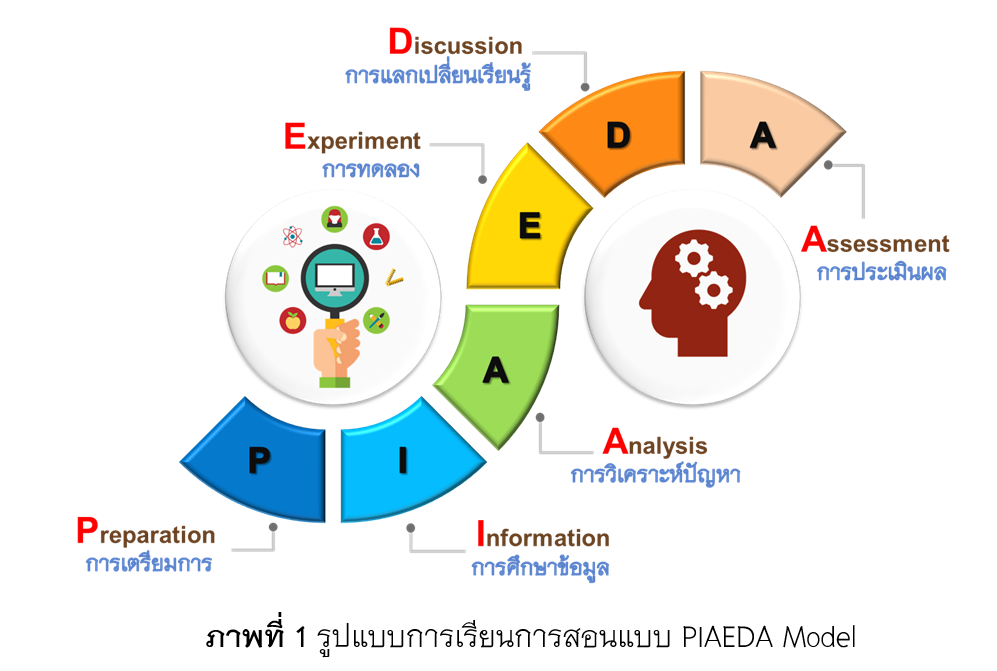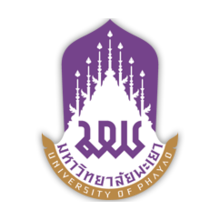Development Instructional Model in Waveguide and Propagationusing PIAEDA Learning Model
Keywords:
PIAEDA learning model, Waveguide, Wave PropagationAbstract
Objectives of this research were to developed and find the efficiency of an instructional model on Waveguide and Propagation. The concept of learning model and other related researches have been studied. Thus, we develop and design the student centered learning model called the PIAEDA learning model. Researching Tools were as follows the Waveguide and Propagation instructional contain with teacher guide, teacher plan, content, achievement test, PowerPoint and CST Microwave Studio®. Sample group was 15 students who were studying in Bachelor of Industrial Technology from the Program in Telecommunication Technology, Rajamangala University of Technology Suvarnabhumi. This paper results showed the quality of developed research tools is evaluated by the five experts that the PIAEDA learning model is more appropriate (X= 4.14, S.D. = 0.63). The efficiency of the PIAEDA learning model was equal to 1.08 that was consistent to the standard criteria of Meguigans’s. The quality of learner's satisfaction is more satisfy level (X= 4.25, S.D. = 0.77) which agreed with the research hypothesis. Therefore, the developed learning model can be used effectively in partial teaching on Applied Electromagnetic subject.
References
ศึกษาธิการ, กระทรวง. (2546). พระราชบัญญัติการศึกษาแห่งชาติ พ.ศ.2542 และที่แก้ไขเพิ่มเติม (ฉบับที่ 3) พ.ศ.2553. กรุงเทพฯ: กระทรวงศึกษาธิการ.
พรชัย เจดามาน และคณะ. (2559). ยุทธศาสตร์การพัฒนาเพื่อการบริหารจัดการสู่การเปลี่ยนผ่านศตวรรษที่ 21: ไทยแลนด์ 4.0. วารสารหลักสูตรและการเรียนการสอน คณะคุรุศาสตร์ มหาวิทยาลัยราชภัฏมหาสารคาม, 2(1), 1-14.
อนุรักษ์ เมฆพะโยม. (2557). การพัฒนารูปแบบการเรียนการสอนแบบ P-CSDE สำหรับการศึกษาด้านวิศวกรรมโทรคมนาคม ระดับปริญญาตรี. (วิทยานิพนธ์ปริญญาดุษฎีบัณฑิต). กรุงเทพฯ: มหาวิทยาลัยเทคโนโลยีพระจอมเกล้าพระนครเหนือ.
พินิจ เนื่องภิรมย์. (2558). การพัฒนาอัลกอริทึมของการวนรอบคลื่นสำหรับการเรียนการสอนด้านวิศวกรรมไมโครเวฟ. (วิทยานิพนธ์ปรัชญาดุษฎีบัณฑิต) . กรุงเทพฯ: มหาวิทยาลัยเทคโนโลยีพระจอมเกล้าพระนครเหนือ.
กัญญวิทย์ กลิ่นบำรุง. (2560). การพัฒนารูปแบบการเรียนการสอนโดยใช้กระบวนการแบบสะเต็มศึกษาสำหรับการศึกษาด้านวิศวกรรมสายส่งความถี่สูง. (วิทยานิพนธ์ปรัชญาดุษฎีบัณฑิต). กรุงเทพฯ: มหาวิทยาลัยเทคโนโลยีพระจอมเกล้าพระนครเหนือ.
อลงกรณ์ พรมที และสมศักดิ์ อรรคทิมากูล. (2558). การพัฒนารูปแบบการเรียนการสอน เรื่องสมการแม็กซ์เวลล์คลื่นระนาบและกำลังไฟฟ้าของคลื่น โดยใช้รูปแบบการเรียนรู้ของ SATADE Model. วารสารวิชาการครุศาสตร์อุตสาหกรรมพระจอมเกล้าพระนครเหนือ, 6(1), 177-186.
Taboy, J.P. (2006). A Community Sharing Hands-on Centers in Engineering’s Training. International Journal on Line Engineering, 2(1).

Downloads
Published
How to Cite
Issue
Section
License
Copyright (c) 2021 Phayao University

This work is licensed under a Creative Commons Attribution-NonCommercial-NoDerivatives 4.0 International License.
ผู้นิพนธ์ต้องรับผิดชอบข้อความในบทนิพนธ์ของตน มหาวิทยาลัยพะเยาไม่จำเป็นต้องเห็นด้วยกับบทความที่ตีพิมพ์เสมอไป ผู้สนใจสามารถคัดลอก และนำไปใช้ได้ แต่จะต้องขออนุมัติเจ้าของ และได้รับการอนุมัติเป็นลายลักษณ์อักษรก่อน พร้อมกับมีการอ้างอิงและกล่าวคำขอบคุณให้ถูกต้องด้วย
The authors are themselves responsible for their contents. Signed articles may not always reflect the opinion of University of Phayao. The articles can be reproduced and reprinted, provided that permission is given by the authors and acknowledgement must be given.







